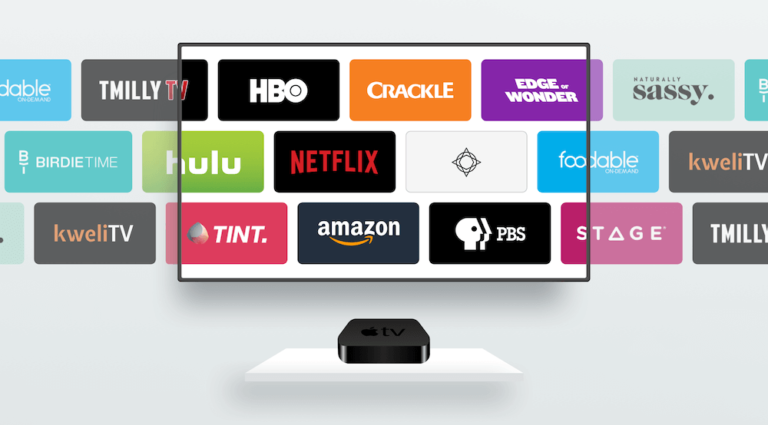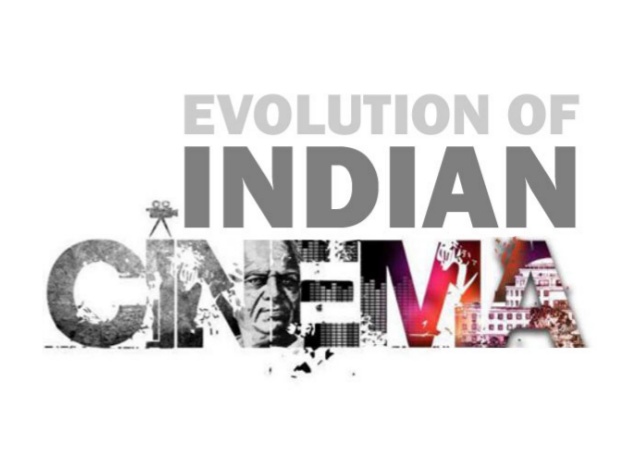The future of over-the-top content (OTT) will see the rise of local regional content production by regional OTT players, driven by the need for storytelling and creating customized offerings for the different market segments, experts believe.
While the likes of Netflix’s ‘The Crown’ has been a hit internationally, OTT players understand that 60% of the world’s OTT viewers population is in the Asia Pacific region, which explains why they are investing significantly in creating localized content to win the hearts and minds of consumers in this region.
Take Hooq, a Singapore-based OTT joint venture between Sony Pictures, Warner Bros., and Singtel for example. The platform operates on a subscription video-on-demand (SVOD) and advertiser video-on-demand (AVOD) model.
Its originals slate is now at 65 productions across the region, complementing the more than 35,000 hours of movies, television shows, and sports available anytime and anywhere. Local and regional content accounts for a large part of its content inventory and viewing minutes.
It hopes to bring 100 original content from Indonesia, Philippines, Singapore, and Thailand to its platform by mid-2020. To do this, it is seeking and developing Asian storytelling through the Hooq Filmmakers Guild, an annual initiative to find new film talent in Asia, providing them the opportunity to bring great ideas to life on screen.
“Content will always be king, which makes accessibility its queen. Accessibility is key in driving consumption – from flexible subscription plans to user interface to extra value propositions – these play a factor in overall viability of a platform,” Sheila Paul, the vice president of marketing at Hooq, tells The Drum.
“We look at data with a keen eye and keep tabs on consumption habits across the region. These become part of our acquisition strategy, carefully balancing existing appetite with existing content strategy.”

For OTT platforms like Hooq, knowing the individual customer is crucial as is an understanding of the experience each is looking for, Laura Quigley, managing director for South East Asia at Integral Ad Science explains to The Drum.
Rather than offering one-size packages as pay-TV did, she says tomorrow’s services need to create customized offerings for the different market segments.
“Local content has also proven successful with players like Iflix building deep libraries of strong local content as a strategic differentiator in the region. For providers, the challenge is identifying those market segments and their unique preferences when it comes to content,” explains Quigley.
“There is no blanket rule for good content, it needs to be tailored to the taste of the audience, however, basic principles are that it should be entertaining, engaging, non-preachy, non-offensive, and leave a consumer with the satisfaction of time well invested.”
She adds: “There will always be an ocean of content, however, the trick is to make the content stand out and make it’s unearthing easy through promotional efforts. If the content is king, then unearthing it is the queen. Artificial Intelligence (AI) and analytics will further become key elements of smart content discovery with intelligent recommendation functionalities.”
The boom in content is drawing more people into watching movies and shows on OTT platforms, versus more traditional formats such as TV and cinema, notes Kevin Smyth, general manager of South East Asia at Telaria.
However, he cautions in the long term, the rate of new content coming online will have to slow because it simply will not be profitable to churn out premium shows at this pace.
Dominic Powers, chief executive officer, CtrlShift, agrees, pointing out that the nature of OTT means that consumers can potentially get access to content from the four corners of the globe, notwithstanding location-based restrictions that many do get around with VPNs.
“With so much content, content discovery really is the new frontier. How can they watch it if they do not know about it?” he asks.
“Netflix has done a reasonable job at this, but discovery now needs to be at an aggregate level, much like travel. The next big thing in the content will be an aggregator. This in itself will drive amazing opportunities for brands on a global scale.”
The future of funding OTT content
The race to produce content to attract viewers both in Asia and the west has also thrown up questions about the future of funding of OTT content.
For example, while Netflix pays over and above to commission from the outset, they do not have incremental payment structures around key talent getting percentage cuts for royalties post-syndication.
Powers notes the OTT industry is in a very strangulated economic cycle for content with massive disruption coming from new players with deep pockets like Apple and Amazon. He says traditional players like Disney or 21st Century have to think about the product and consumer experience that they have not focused on before.
With the key disruptors having a market cap of more than US$3 trillion at the end of 2019 with massive revenue and profit streams, he points out the incumbents will have to move quickly and effectively.
“The disruptors in this space understand the experience and mobile consumption in ways traditional content moguls are struggling to keep up with. But there is also a place for hyper-local content that does not necessarily have big budgets,” says Powers.
“There will be a morphing of the local TV stations in markets like Singapore and Hong Kong that have historically had a long term contractual relationship with artists that allow them to create all types of content cost-effectively. Now they need to develop their business models beyond linear advertising.”
The growth of OTT video services is posing a challenge to broadcast royalty collections, says Quigley, noting that in determining which OTT or third-party platforms to license content to and in the form of a full or partial stack of episodes, licensors will be challenged to establish that they have followed a value-maximizing strategy that benefits all rights holders.
This challenge is compounded by the novelty of OTT and SVOD deals, as well as the appearance of many new content buyers in the market.
However, she explains these challenges also apply to profit participants, who will face obstacles trying to establish that a licensor did not achieve fair market value when that market is so constantly changing. As part of a well-considered vetting process for OTT and streaming sales, she urges studios and licensors to remember to consider and document intangible, value-adding factors, such as building audience loyalty and market share through stacking.
“For example, networks and SVOD services often want to allow their viewers to quickly catch up on shows by airing all episodes of a current season in addition to all episodes of earlier seasons,” explains Quigley.
“The “stacking” of episodes in this manner arguably strengthens audiences for franchises and has inherent value-adding “plus” factors. For example, allowing new viewers to quickly become loyal veteran viewers, but profit participants might nevertheless disagree if they do not believe selling stacks would yield the highest aggregate price on paper.”
She continues: “As a result, profit participants are likely to be more closely scrutinising royalty reports or questioning the lack thereof. As OTT becomes more mainstream, my guess is in time, these will become the norm than an exception and the royalty challenges will normalise.”
For Hooq, it looks to fully fund and exploit content outside of its territories to reach a global audience through its partnership with all3media, which holds international distribution rights for Hooq’s Original productions.
It also engages in co-productions with free-to-air broadcasters as well as international partners in order to increase the output of HOOQ’s content while being able to share the cost and expenses involved.
For example, Hooq recently sealed separate subscription and content deal with Mediacorp, Singapore’s largest content creator and national media network.
The deals will see the full suite of Hooq’s SVOD series and movies can be streamed on Mediacorp’s digital video destination, MeWatch. Additionally, a curated catalogue of Mediacorp’s productions will be available on Hooq.
Then, there is also the route of sponsorship and advertising on the AVOD layer or via product placements within the content itself.
How should OTT platforms prepare for an AVOD future?
Smyth predicts that the vast majority of OTT platforms across Asia will adopt an AVOD model because consumers are overwhelmed with subscriptions. He explains this is because, in many instances, the emerging market consumer just cannot justify paying for dozens of streaming services.
Given how hard it is becoming to break into the already-crowded OTT space with a subscription model, Quigley adds, it is looking increasingly like newcomers will need to rely on ad-supported streaming models similar to the ones employed by Hulu and YouTube, rather than the pure subscription revenue of Netflix.
She says that is going to present a tremendous opportunity for advertisers as viewers continue to shift their viewing habits to digital and even premium broadcasters are forced to bring their programming to the screens (CTV, mobile, laptop, etc.) creating new ad placements that combine the attention-grabbing quality of television content with the highly-measurable impressions of digital.
“According to the latest IAS APAC Industry Pulse report, respondents in ANZ (71%) and Singapore (62%) expressed the most interest in the channel and half of the respondents said their companies are prioritizing connected TV and OTT video in 2020,” explains Quigley.
“As an OTT provider, a highly active customer churn rate can spell financial uncertainty. However, when a subscriber outright cancels your service, your business should take a comprehensive customer lifetime approach, instead of channelling all of your efforts toward acquisition and reacquisition. Analyzing active churn can be a learning opportunity, providing a chance to gain insight into your users.”
She adds: “This allows your business to improve customer experience and reduce future churn. Of course, you need to make sure that the solutions you put in place actually address engagement and customer experience. Otherwise, you risk investing in methods that ultimately provide zero benefits. To maximize recurring revenue, OTT providers must scrutinize every bit of customer-related data.”
For example, Quigley says Netflix monitors all aspects of user activity down to the smallest detail, using the data to tailor content specifically toward the user.
When ‘House of Cards’ premiered, Netflix knew how to best target people to watch the show. Kevin Spacey’s fans were shown trailers with only him in them, while people who enjoyed “Thelma and Louise” saw trailers featuring House of Card’s female actors.
While the company certainly had a first-to-market advantage, Netflix’s impressive growth is due in part to its keen ability to constantly improve its service by examining viewership data and using that data to guide the company’s efforts in quality of experience and quality of service improvements, part of what Netflix calls its “culture of experimentation.”
“The content library is an important piece of its subscriber acquisition and retention strategy. In the early days of streaming video, Netflix supplemented its movie catalogue with seasons of TV networks’ old shows – and that inadvertently gave birth to an entirely new mode of consumption: binge viewing,” explains Quigley.
“Data-driven content creation has enabled Netflix to target specific demographics and content genres. And the more of its originals are considered must-see—by its subscribers, or the reviewers, or the awards organizations—the more subscribers the company can sign up, and the more engaged those viewers are once they’ve signed up.”
She adds: “A key metric for Netflix is engagement—how many hours consumers spend on the service each day— and how Netflix can push that number higher. By conducting extensive A/B testing around big and small changes to the overall Netflix experience, the company is able to surgically tweak aspects of the experience in ways that boost engagement, and therefore improve retention.”
To prepare for an AVOD model, OTT platforms have to ensure that success metrics must come down to dollars and cents. Simply put, says Powers, it is about the ROI, much like movie distribution historically. How much can we gross from this content and all its revenue streams, is a question advertisers should be asking, he says.
CtrlShift recently completed its first step towards integrating the over-the-top (OTT) channel within its enterprise advertising software, The Hub. The latest update allows advertisers to tap into the ad inventory on Iflix. Through this integration, marketers will be able to execute, view, edit, report and build goal-oriented and business-critical insights on The Hub, using campaign metrics gathered via the OTT channel.
“Advertising is one revenue stream and its success will depend heavily on the ease of execution for brands and agencies that want to reach engaged audiences. As an industry, we have a history of making things difficult for ourselves and our clients, and I suspect in the short term the shiny new toy of ‘connected TV’ will be no different and it will look to become another silo of media spend,” he explains.
“We have to break that mould to look holistically at how we engage consumers throughout their lifecycle of connection with a brand, product or platform. Only then will we truly be able to measure the success of all constituent pieces.”
Regardless of what the future holds, the accurate measurement will become increasingly crucial in taking all these different types of platforms into account to ensure viewers get what they want, when and how they want it, according to Quigley.
“By approaching measurement in an intelligent, holistic way, and using real consumer insights to tailor content accurately, there’s no reason why the future of streaming can’t be a win-win for all involved, creating a better user experience – and a better ecosystem – for brands and consumers alike,” she explains.
According to Hooq, it already sees behaviour where one viewer consumes content across different devices, yet currently, each view or stream is counted separately.
It believes in the future, there will be ways to measure true viewership tied to a unique viewer, and the ability to profile these viewers based on streamed minutes, shows and genres consumed, frequency of viewership, where and when they watch, what they are looking for, and other user behaviours.



